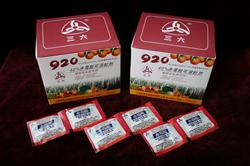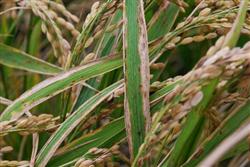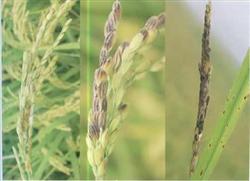Can rice spray gibberellic acid (920) to promote heading?

Can rice spray gibberellic acid (920) to promote heading? Gibberellic acid, also known as gibberellin, 920, is a broad-spectrum plant growth regulator, mainly through leaves, twigs, flowers, seeds or fruits into the plant, and then transmitted to the active growth parts to play a role. The drug can promote cell elongation, cause stem elongation and plant height, relieve dormancy of seeds and tubers, promote germination, change the ratio of female to male flowers, affect flowering time, and reduce flower and fruit shedding. Gibberellic acid is often used in hybrid rice seed production to regulate flowering, promote maternal heading and prevent neck wrapping. Some studies have shown that spraying gibberellic acid promotes rice internode elongation, and its mechanism is to change the solution concentration between plant cells, which causes water to flow into the cells due to osmotic pressure, cell expansion and cell wall loosening, which leads to cell expansion and elongation. The concentration of gibberellic acid sprayed on rice varies with the severity of neck wrapping. If the spraying concentration is too high, it will lead to excessive length of panicle internodes and break. Spraying gibberellic acid at rice breaking and heading stage should be determined according to plant growth. If the growth of rice is normal, it should not be applied, lest the last section of rice plant is pulled out too long, causing lodging in the later stage; if the growth of rice is restrained, heading is difficult, and neck-wrapping phenomenon occurs, it can be sprayed appropriately. The above direct seeding rice fields were direct seeded with medium-maturing medium japonica rice from June 15 to 20, and some fields began to break and heading by September 1, and the growth of rice was basically normal. Do not spray gibberellic acid to promote plant heading. Click to get more rice planting techniques click to get more food crop planting techniques
- Prev

How to control the three major diseases of rice?
How to control the three major diseases of rice? Please introduce the control methods of the three major rice diseases can refer to the following methods for control: 1. Rice blast (1) Leaf blast: dark green, nearly round or oval spot, followed by a slight tip at both ends; usually when there are acute spots or disease centers, especially when nitrogen fertilizer is applied.
- Next

Why does rice produce empty chaff and how to prevent it?
Why does rice produce empty chaff and how to prevent it? Please give a detailed introduction. Under normal circumstances, the rate of unblighted rice grains is 10%-20% in general, and 40% in severe cases, which has a great impact on rice yield. The main results are as follows: 1. the formation reason of rice empty grain rate is mainly affected by three factors. 1. Angry.
Related
- The first cup of black tea in spring, the flavor and history of tea gardens in Kenya, Africa
- The computer can not only choose potatoes, but also grow tea rice. AI will grow winter oolong tea champion.
- It is not only the inflated tea bitten by insects, but also engraved with the four seasons tea in Beipu.
- The Oriental Beauty Tea Festival in Zhuxian County takes the stage at the weekend to experience the plus-size feast of oil tea.
- & quot; Oriental Beauty Tea & Exploration of Emei in Hsinchu, the hometown of quot;
- The new variety of strawberry "Tainong 1" dessert is the first choice with mellow aroma. Crimson gorgeous
- History of Tea in Taiwan: from Wild Inner Mountain to Export Tea Garden
- Two types of Taiwan Oriental Beauty Black Tea won the British three-Star Award for Childhood Tea Xiang Zhang Jiaqi changed from pilot to champion tea maker.
- Banana species and varieties: the planting history of Taiwan Xianren banana and dwarf banana is long, is banana disease resistant?
- Coffee planting Technology: Qianjie Coffee from Seedling to harvesting

